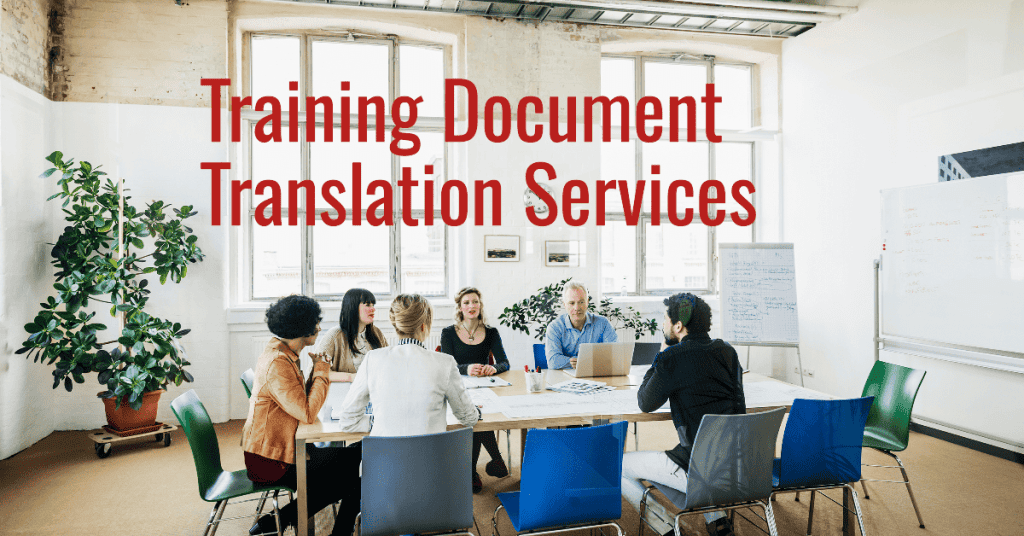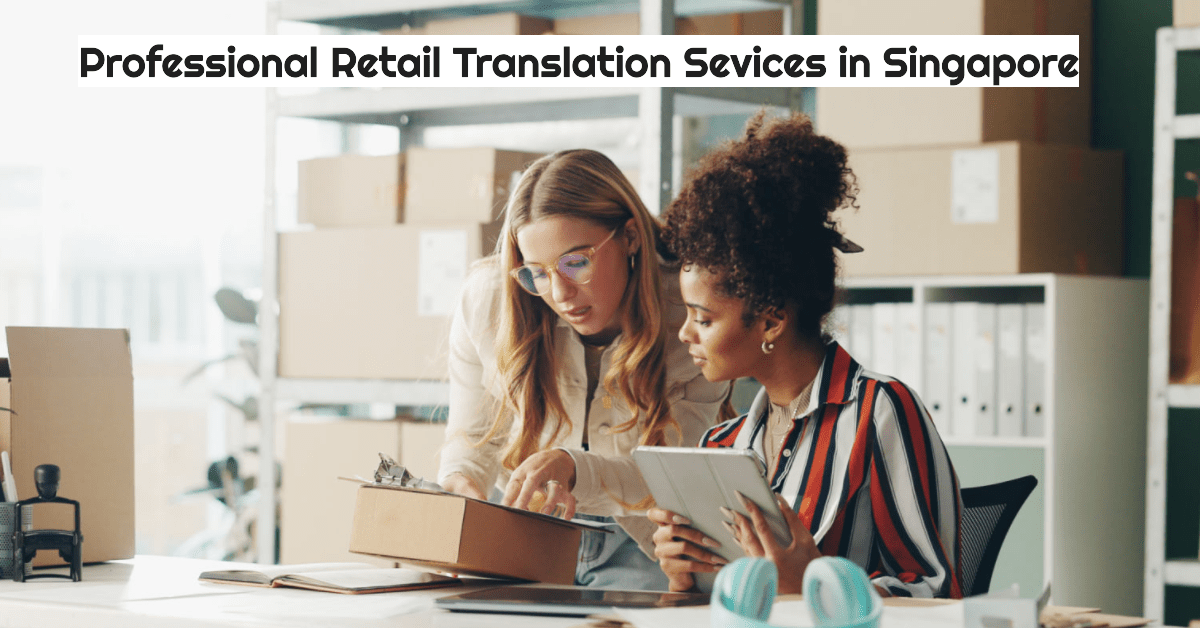Training Document Translation Services
In today’s globalised workforce, the demand for multilingual training materials has never been more pressing. Companies operating in diverse global markets recognise that effective training is crucial for enhancing employee performance, fostering collaboration, and ensuring compliance with local regulations. As teams increasingly consist of individuals from various linguistic backgrounds, the ability to provide training documents in multiple languages is essential for maximising engagement and understanding.
This exploration aims to highlight the significance of training document translation services in Singapore, addressing both the challenges organisations face and the best practices for overcoming them. Translating training materials is not merely about converting text from one target language to another; it involves ensuring that the content is culturally relevant and contextually appropriate. This complexity can lead to obstacles such as maintaining consistency across translations and managing varying local dialects.
The scope of this discussion will cover the different types of training documents, including manuals, e-learning modules, and instructional videos, as well as the translation process itself. Furthermore, we will provide guidance on selecting the right service provider, focusing on factors such as expertise, technology use, and quality assurance methods. By understanding these elements, organisations can enhance the effectiveness of their training initiatives and support their diverse workforce more effectively.
Definition of Training Documents
Training documents encompass a variety of materials designed to facilitate learning and development within an organisation.
These documents can include manuals that provide detailed instructions on processes, eLearning modules that offer interactive lessons, and onboarding materials that help new employees acclimatise to their roles and the company’s culture.
Each type of training document serves a specific purpose, ensuring that employees have the necessary resources to perform their duties effectively.
The clarity and accessibility of these materials are crucial, as they directly impact the quality of training and the overall performance of the workforce.
Importance of Accurate Translation
Accurate translation of training documents is vital for several reasons. Firstly, it ensures that all employees, regardless of their language proficiency, can understand the content and apply the knowledge in their daily tasks. Misinterpretations due to poor translation can lead to mistakes, decreased productivity, and even safety hazards in certain fields.
Moreover, accurate translations uphold compliance with legal and regulatory requirements. Many industries mandate that training materials be available in multiple languages to cater to diverse workforces. Failure to provide correctly translated content documents could result in non-compliance penalties and legal issues.
Therefore, investing in high-quality and in-depth translation solutions not only enhance employee training but also protects the organisation from potential liabilities.
By prioritising accurate translations, companies can foster an inclusive work environment that values effective communication and understanding among all employees.
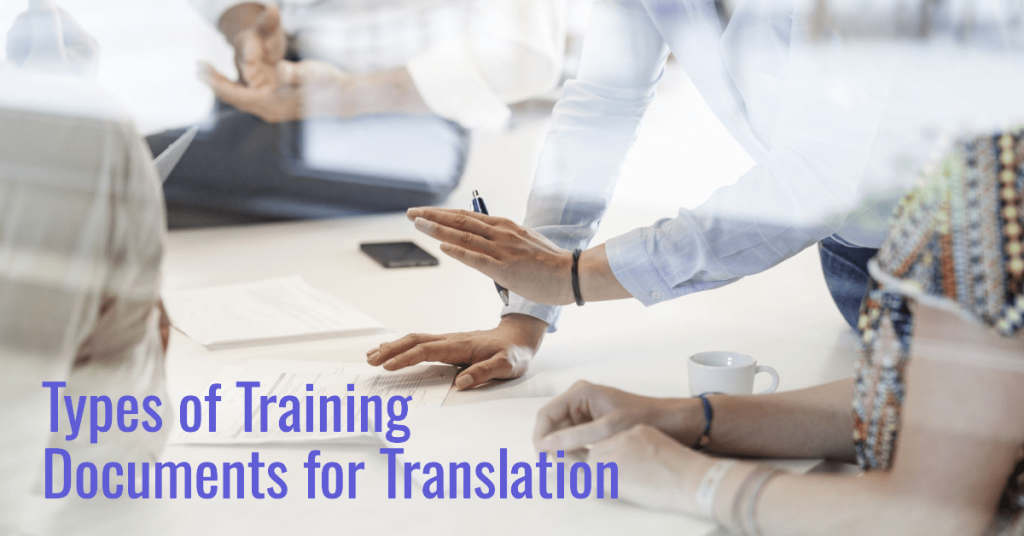
Types of Training Documents Requiring Translation
In today’s globalised workforce, the translation of training documents is crucial for effective communication and comprehension. Various types of training materials require careful translation and localisation solutions to ensure that all employees, regardless of their language background, can access essential information. Here are some key categories that highlight the importance of translation solution.
Onboarding Materials
Translating onboarding materials, such as employee handbooks and enterprise orientation guides, is vital for helping new hires get used to a company’s culture and policies. These documents often contain critical information regarding company values, procedures, and benefits. If not accurately translated, new employees may misunderstand important aspects of their roles, leading to confusion and inefficiency. Clear translations foster inclusivity and ensure that all employees start their journey on the same footing.
Technical Training Manuals
In technical fields, accuracy in translation is paramount. Technical training manuals often include complex concepts, specific terminology, and detailed instructions that must be accurately conveyed to ensure proper understanding and application. Errors in translation can lead to misinterpretation of technical processes, potentially resulting in costly mistakes or safety hazards. Therefore, employing qualified translators with expertise in the relevant technical domain and subject matter expertise is essential for maintaining accuracy and clarity.
eLearning Modules
The rise of digital learning has introduced new challenges in translating eLearning modules. These modules often include multimedia content, interactive elements, and a range of instructional materials that need to be adapted for different languages. The challenge lies not only in translating the text but also in ensuring that the content remains engaging and culturally relevant. Translation technology such as using localisation techniques can help address these challenges, allowing for a seamless learning experience across different languages.
Compliance Training Documentation
Accurate translation of compliance training documentation is crucial for meeting regulatory international standards and avoiding legal repercussions. These documents typically outline laws, regulations, and multinational company policies that employees must understand to ensure compliance. Misinterpretations due to poor translations can lead to non-compliance, exposing the organisation to legal risks. Therefore, investing in high-quality translations is necessary to safeguard both employees and the organisation.
Safety Training Materials
Safety training materials require clear and precise translations to ensure that all employees understand safety protocols and procedures, regardless of their language proficiency. Miscommunication in safety instructions can result in dangerous situations and accidents in the workplace. It is essential to translate safety training content accurately to promote a safe working environment and protect the well-being of all employees.
In conclusion, the translation of training documents plays a critical role in fostering effective communication within diverse workforces. By prioritising accurate translations across various types of training materials, organisations can enhance understanding, compliance, and safety, ultimately contributing to a more productive work environment.
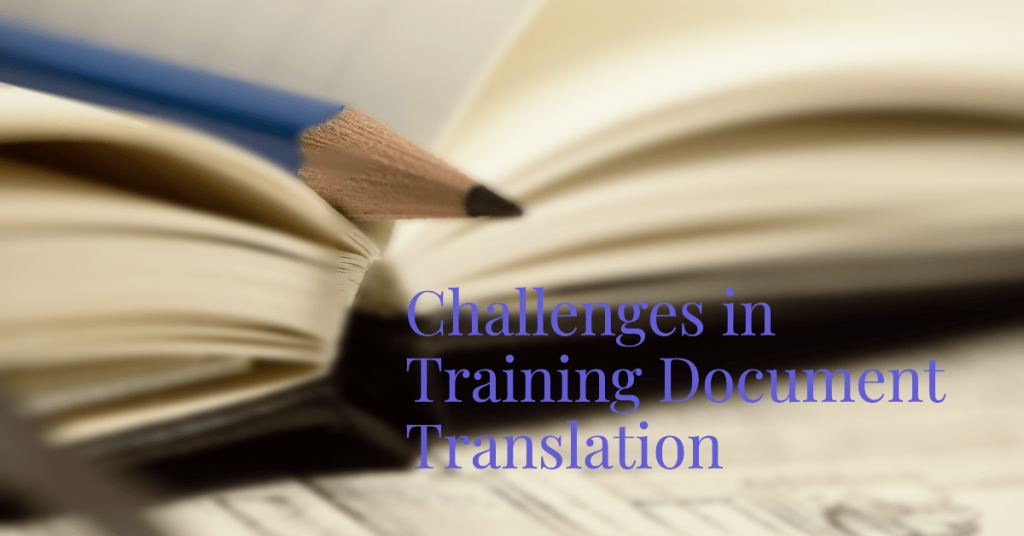
Challenges in Training Document Translation
Translating training documents is not merely about converting text from one language to another; it involves navigating a multitude of challenges that can significantly impact the effectiveness of training programs. Here are some key challenges faced during the translation process.
Cultural Nuances
One of the most significant hurdles in training document translation is the influence of cultural differences. Training materials often contain references and examples that resonate specifically with one culture but may be confusing or irrelevant in another. For instance, idiomatic expressions, humour, and even certain images may not translate well across cultures. This can affect engagement and comprehension, leading to a training experience that lacks effectiveness. It is crucial to understand the target audience’s cultural context to adapt content appropriately, ensuring that it is not only understood but also relatable.
Technical Terminology
Another challenge arises from the complexity of translating specialised language service. Training documents often include technical jargon specific to a particular field or industry. Accurately translating these terms requires not only linguistic proficiency but also a deep understanding of the subject matter. Misinterpretations can lead to confusion and misinformation, undermining the training’s goals. Therefore, translators must be well-versed in both the language and the technical aspects of the content to ensure clarity and precision.
Format and Multimedia Localisation
Training materials are rarely presented in a single format; they often include videos, interactive content, and various visual elements. Adapting these formats for different languages can be particularly challenging. For example, subtitling a video requires not just translation, but also timing adjustments to match the spoken words. Similarly, interactive content may need to be redesigned to accommodate different text lengths and cultural preferences for visuals. The localisation process must ensure that all elements work cohesively together, providing a seamless experience for learners regardless of their language.
Maintaining Consistency Across Languages
Finally, ensuring consistency across different languages poses a significant challenge. It is essential to maintain uniformity in terminology and branding throughout all translated materials. Inconsistent use of terms can lead to confusion and diminish the credibility of the training programme. To achieve this, businesses often develop glossaries and style guides that outline preferred terminology and branding guidelines for translators to follow. This practice not only helps in maintaining quality but also strengthens the overall identity of the training programme across various languages.
In summary, translating training documents presents several challenges that require careful consideration and expertise. By addressing cultural nuances, technical terminology, multimedia localisation, and consistency across languages, organisations can enhance the effectiveness of their training initiatives, ultimately leading to improved learning outcomes for all participants.
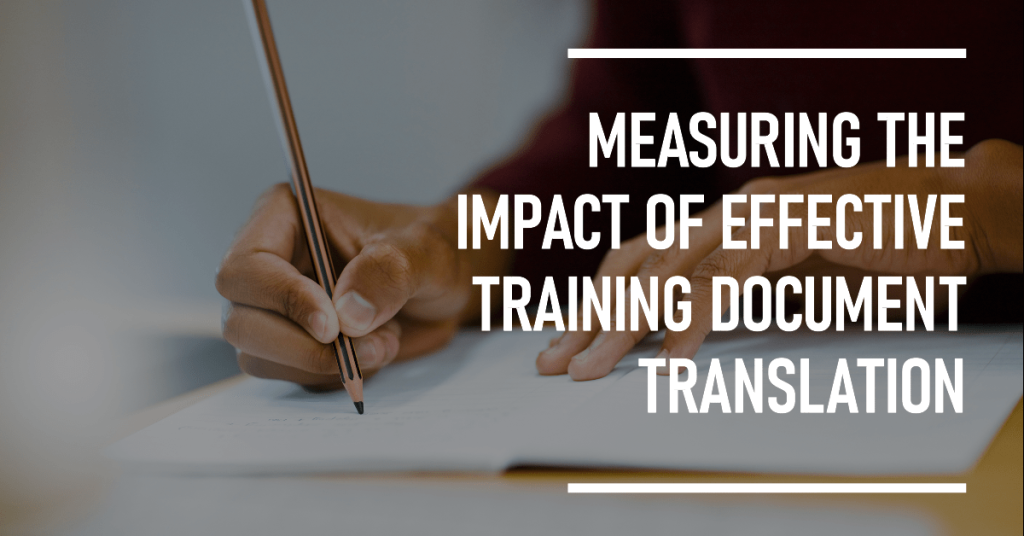
Measuring the Impact of Effective Training Document Translation
In today’s diverse workplace, the importance of effective training document translation cannot be overstated. As organisations expand globally, the need for clear and accurate translations of training materials becomes crucial. This contributes significantly to improved training outcomes, enhanced employee engagement, and increased productivity and efficiency.
Improved Training Outcomes
Accurate translations of training documents play a vital role in enhancing comprehension and retention of the material by employees. When training content is precisely translated into the native language of the participants, it reduces the chances of misunderstandings and confusion. Employees can grasp concepts more readily when they are presented in a language they are comfortable with. This clarity enables them to absorb information more effectively, leading to higher retention rates. Consequently, better-trained employees are more competent in their roles, ultimately benefiting the organisation as a whole.
Enhanced Employee Engagement
Effective translations foster a sense of inclusion and belonging among employees. When training materials are thoughtfully translated, it signals to employees that their language and culture are valued. This inclusivity can significantly boost morale and motivation, as employees feel more connected to the company’s vision and goals. Additionally, when employees understand the training content fully, they are more likely to participate actively in discussions and exercises, leading to a more dynamic and engaging learning environment. This heightened engagement not only improves individual performance but also promotes a positive organisational culture.
Increased Productivity and Efficiency
Clear communication in training is essential for overall organisational performance. When training documents are accurately translated, employees can follow instructions without ambiguity, reducing errors and misunderstandings. This clarity leads to faster onboarding processes and more efficient training sessions, allowing employees to reach their full potential sooner. As a result, organisations can enjoy increased productivity, as employees are equipped with the knowledge and skills they need to perform their tasks effectively. Moreover, reduced confusion during training translates into fewer mistakes in the workplace, contributing to a more streamlined operation.
In conclusion, investing in effective training document translation is not merely a logistical necessity; it is a strategic advantage that can significantly impact an organisation’s success. By ensuring that training materials are accurately translated, companies can improve training outcomes, enhance employee engagement, and boost productivity and efficiency across the board.

Best Practices for Effective Training Document Translation
Translating training documents is a critical task that requires careful consideration to ensure that the content is not only accurate but also resonates with the target audience.
Here are some best practices to follow for effective training document translation.
Engaging Professional Services
Choosing a reputable training translation agency is paramount for achieving high-quality translations. Professional linguists possess the necessary expertise and cultural knowledge to convey your message accurately. They can also handle industry-specific terminology, ensuring that the content is both relevant and understandable. Investing in professional services may incur higher upfront costs, but the long-term benefits of clarity and effectiveness in training will outweigh these initial expenses.
Providing Comprehensive Context
To facilitate effective training translation, it is essential to share comprehensive background information with translators. This includes the purpose of the training document, the target audience, and any specific nuances or terminology that should be maintained. Providing context helps translators grasp the intent behind the text, allowing them to produce a translation that aligns with your organisational goals and meets the expectations of your learners.
Incorporating Feedback from Target Audiences
Gathering insights from end-users is vital to improve translations continually. After the initial translation, soliciting feedback from those who will use the training materials can reveal areas for enhancement. This iterative process not only ensures that the translations are effective but also promotes a sense of ownership among users, making them more likely to engage with the content. Regularly updating and refining translations based on user feedback leads to more effective training outcomes.
Utilising Technology Wisely
Leveraging translation management systems (TMS) and tools can significantly enhance efficiency in the translation process. These technologies help streamline workflows, manage multilingual content, and maintain consistency across various documents. By using TMS, organisations can track progress, collaborate with translators more effectively, and ensure that updates are applied uniformly across all translated materials. Embracing technology in translation processes not only saves time but can also improve accuracy and coherence.
Ensuring Confidentiality and Security
Protecting sensitive information during the translation process is crucial. When dealing with proprietary training materials or confidential data, it is essential to work with agencies that prioritise confidentiality. Ensure that the translation service provider has robust security measures in place, such as non-disclosure agreements (NDAs) and secure data handling protocols. This approach safeguards your organisation’s information and builds trust with your language services partner.
In conclusion, effective training document translation hinges on selecting the right professionals, providing adequate context, incorporating user feedback, utilising technology, and ensuring confidentiality. By following these best practices, organisations can enhance the quality of their training materials and ensure they are accessible and impactful for all learners.
Professional Training Document Translation Company for Your Training Document Translation Needs
When it comes to translating training documents, partnering with the right translation company can make all the difference. WhizWordz Translation Company stands out as a leading provider in this field, and here’s why you should consider them for your training translation needs.
Why Choose WhizWordz Translation Company?
Experienced Translators
WhizWordz employs a team of professional translators who have expertise across various industries, including Human Resources, Information Technology, and manufacturing. This diverse knowledge base ensures that the translations are not only accurate but also tailored specifically to your training requirements.
Quality Assurance
Quality is paramount at WhizWordz. They have implemented a rigorous quality control process that encompasses proofreading, editing, and cultural adaptation. This commitment to quality guarantees that you will receive high-calibre translations that resonate well with your target audience.
Timely Delivery
In today’s fast-paced business environment, meeting deadlines is crucial. WhizWordz has a proven track record of delivering translations promptly, ensuring that your training materials are ready when you need them, without sacrificing quality.
Competitive Pricing
Cost is always a consideration for businesses, and WhizWordz offers cost-effective rates for their translation services. This makes them an affordable option for organisations of all sizes looking to ensure their training materials are accessible to a global audience.
Take the Next Step
To experience the benefits of WhizWordz’s training document translation services, reach out today.
Our dedicated team will work closely with you to understand your specific needs and provide tailored solutions. Don’t settle for anything less than excellence when it comes to translating your vital training documents.
Choose WhizWordz as your trusted partner in delivering high-quality, culturally appropriate training materials to your international workforce.
Get in touch with us now for a free quote to get started
Frequently Asked Questions (FAQs)
Q1: What are Training Document Translation Services?
A: Training Document Translation Services involve the professional translation of various training materials from one language to another. This service is essential for organisations that have a diverse workforce or operate in multiple countries. By utilising expert linguists and subject matter experts, companies can ensure that their training courses are accessible and understandable for all employees, regardless of their target language.
Q2: Why is Translation Important for Training Materials?
A: Translation is crucial for training materials as it allows organisations to effectively communicate their training goals to a multilingual audience. When training documents are accurately translated, it enhances understanding and retention of information among international employees. This leads to improved performance and productivity, ultimately benefiting the enterprise as a whole.
Q3: How Do I Choose a Training Document Translation Service Provider in Singapore?
A: When selecting a translation service in Singapore, consider the following factors: expertise in training translation, linguistic capabilities in relevant languages, and the availability of subject matter experts in your industry. Additionally, look for a provider that offers localisation services to adapt content for cultural nuances. Don’t forget to check for client testimonials and ask for a free quote to understand the costs involved.
Q4: What is the Process for Training Document Translation?
A: The process for training document translation typically includes several stages: initial consultation, content analysis, translation, quality assurance, and final delivery. During the consultation, the translation service will assess the specific needs of your project and establish timelines. After translators work on the content, it undergoes a review process by subject matter experts to ensure accuracy and adherence to international standards.
Q5: What Languages Can Training Document Translation Services Cover?
A: Most language services partners offer translation solutions in a wide range of languages, depending on the needs of their clients. Commonly translated languages in Singapore include Simple Chinese translation, Malay translation, Tamil translation, and others. It’s essential to choose a provider that can meet your specific target language requirements and has experience in your industry.
